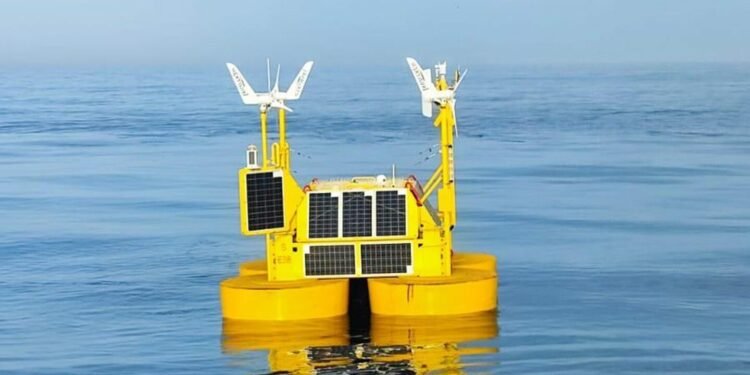Developers of the Stromar floating offshore wind farm have launched a buoy at its development site, kicking off a year-long monitoring campaign.
The E38 EOLOS Light Detection and Ranging (LiDAR) unit was deployed at the Stromar site,off the coast of Caithness around 30 miles from east of Wick, on Friday 8 September.
Equipped with fully independent and remote sensing devices, it will remain in the water for at least 12 months to capture site data covering wind speed and direction, ocean currents, tide, atmospheric pressure and air temperature – all of which will inform the wind farm’s design.
Developers Ørsted, Falck Renewables (now Renantis) and BlueFloat Energy secured the site – known as Option N3 – after the consortium was successful in the Scotwind licensing round in early 2022.
The developers already have a seabed lease agreed with Crown Estate Scotland for up to 1GW of capacity.
The consortium has said its proposed design is based on reinforced concrete structures which are straightforward to construct by “a large local workforce.”
It has outlined ambitions to spend up to £2.6 billion within the Scottish supply chain over the period of the project, with nearly £1.5bn already committed, according to a supply chain development statement (SCDS) submitted last year.
Stromar project development director Nicholas Ritchie said the installation of the LiDAR buoy marked “an important stage in the journey” for the Stromar scheme.
“The 1GW of renewable energy to be produced by Stromar could power more than 1 million homes, and the opportunities presented by the site help position Scotland as a leader in floating wind energy,” he added.
Meanwhile, Bluefloat and Falck continue to work on two further Scotwind schemes, including a joint site east of Aberdeen in Plan Option E1 known as Bellrock, and a site north of Fraserburgh in Plan Option NE6 named Broadshore.
Recommended for you




 © Supplied by Stromar
© Supplied by Stromar






